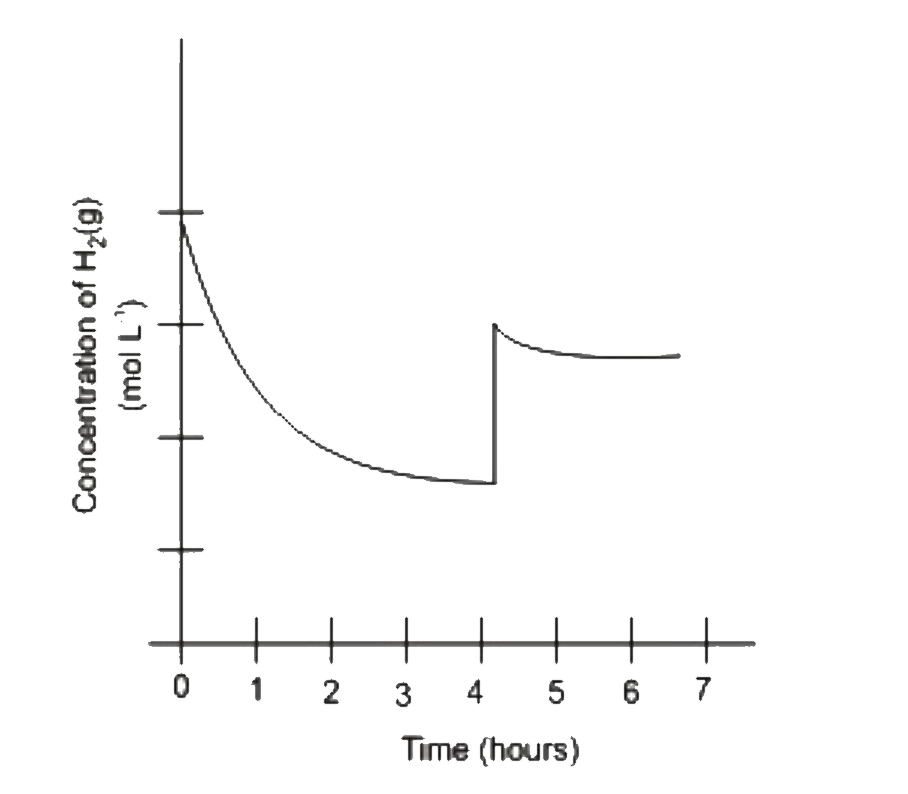The reaction between phosphorus (P4) and hydrogen (H2) can result in the formation of phosphine (PH3) as shown :
P4(s)+6H2(g)⇔4PH3(g)
The graph shows the change in concentration of hydrogen for this reaction in which the system was distrubed after four hours.

Which of the following could explain the change in hydrogen concentration at time = 4 hours?
The volume on the reaction vessel was decreased
A catalyst was added
The pressure on the reaction mixture was decreased
More phosphorus was added
The correct Answer is:A
Step by step video, text & image solution for The reaction between phosphorus (P_(4)) and hydrogen (H_(2)) can result in the formation of phosphine (PH_(3)) as shown : P_(4)(s)+6H_(2)(g)hArr 4PH_(3)(g) The graph shows the change in concentration of hydrogen for this reaction in which the system was distrubed after four hours. Which of the following could explain the change in hydrogen concentration at time = 4 hours? by Chemistry experts to help you in doubts & scoring excellent marks in Class 12 exams.
Updated on:21/07/2023Topper's Solved these Questions
Similar Questions
Knowledge Check
Which of the following liberate hydrogen on reaction with dilute H2SO4 ?
AFeBCuCAlDHgWhich of the following liberate hydrogen on reaction with dilute H2SO4 ?
AFeBCuCAlDHg100mL of phosphine (PH3) on hearing forms phosphorous (P) and hydrogen (H2). The volume change in the reaction is
Aa decrease of 50mLBan increase of 100mLCan increase of 150mLDan increase of of 50mL
consider the following reaction,
N2(g)+3H2(g)⇔2NH3(g)
The rate of change of concentration for nitrogen is −0.3×10−4Ms−1. The rate of change of concentration of ammonia is
View SolutionIf the equilibrium constant for the reaction 0.125.
P4(g)+6Cl2(g)⇔4PCl3(g)
The value of equilibrium for this reaction
View SolutionFor the reaction
N2+3H2→2NH3 The rate of change of concentration for hydrogen is 0.3×10−4Ms−1 The rate of change of concentration of ammonia is :
View SolutionAt 527∘C, the reaction given below hasKc=4
NH3(g)⇔12N2(g)+32H2(g)
what is the Kp for the reaction ?
N2(g)+3H2(g)⇔2NH3(g)
View Solution100mL of phosphine (PH3) on hearing forms phosphorous (P) and hydrogen (H2). The volume change in the reaction is
View Solution
